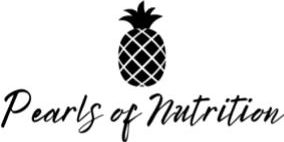Am I really saying this?! Am I REALLY telling you it is okay to eat red meat again? Yes my pretty little nutrition lovers, I am. As I have mentioned before it is important that when cooking you utilize animal products that were raised in a proper environment. Grass fed cows were allowed to graze on a pasture eating what they are naturally intended to eat. While pasture raised animals are allowed to roam free and likely do graze on the grass they may also be given grain feed. Same thing with cage free. It may not be in a cage but you don’t know exactly how much space it was allowed to roam on. And finally don’t be tricked into thinking “vegetarian feed” is a good thing. It’s simply peachy that animals aren’t given feed containing ground up mean meat unfit for human consumption but that doesn’t make it healthy or normal for animals to eat.
Grass fed > Pasture Raised > Cage Free > “Vegetarian Feed”
The information discussed below comes from studies which focused their research on beef, but the benefits of grazing in their natural environment would, obviously, translate to other animals as well.
1. More Omega-3 and less Omega-6 Fatty Acids
Omega-3 and Omega-6 are Essential Fatty Acids (EFA) meaning our body does not have the ability to make them and we must obtain them from food. I could (and will) write an entire post on them. I could write songs on them. Poetry even. We need them both, but in the proper proportion. Too much omega-6 and not enough omega-3 means inflammation. Inflammation will make you die a slow and painful death of prescription medication, doctors visits, and insurance company arguments. But I digress. Grass fed beef has a higher concentration of omega-3 fatty acids. As the level of grain in the animal’s diet increases, the concentration of omega-3 fatty acids decreases.
2. Conjugated Linoleic Acid (CLA)
CLA is another type of fatty acid which has anti-cancer properties. It has also been shown to reduce fat accumulation. Yes please. CLAs are produced in the GI tract of your beautiful, healthy, happy grass fed cow. Animals which are grain fed have a lower rumen pH which decreases CLA production. Buzz kill.
3. Vitamin A Precursors
Vitamin A is a little gem of a nutrient that is necessary for vision (I totally wanted to give you a more in-depth description of this but after consulting one of my texts and realizing it meant including words like guanosine triphosphate and phosphodiesterase I figured you’d be okay with me leaving it at that). It is also necessary for cell differentiation, creation of these super cool things called glycoproteins, bone development and maintenance, and the immune system. I’m getting so excited talking about it I think I want to start writing posts on how cool each individual vitamin is. Grass fed cows have higher amounts of vitamin A precursors which we can convert to vitamin A in our body. You may notice the fat on your grass fed meat is a little more yellow which is because these precursors are pigments! Isn’t nutrition cool?
4. Vitamin E
More vitamins! Vitamin E is like the Superman of your insides. It is an antioxidant which means it can neutralize free radicals which contribute to chronic diseases like cancer and cardiovascular disease. And you guessed it, grass fed wins.
5. Fat Content
While you know I’m not afraid of fat consumption many toxins are stored in the fat tissue. Luckily animals which aren’t exposed to hormones and are allowed to graze naturally on the land would (one would hope) have less toxins in their body. However, due to the pollution of our land, air, and water toxins are unavoidable. Work to cut them out where you can. Grass fed meat is naturally leaner than grain fed.
6. Cows Are Cool
I have this weird love for cows. They used to be the background on my computer. They’re so big and stupid it’s comical and adorable. But imagine living a life where you’re fed hormones to make you grow fast, antibiotics to cure you of disease from living in horrible conditions, and spending all your time in a stall. Not cool. So not to go all PETA on you but at least eat a cow that had a decent quality of life. And if the cow’s welfare isn’t enough for you: stress hormones have actually been found to decrease meat quality and why eat crappy tasting food?
Chances are if you’ve taken the time to find a grass fed meat it is likely coming from somewhere close. This means less transport time, less air pollution, and better quality. Check out eatwild.com to find some grass fed beef in your area.
One more thing to think about before you go. Oftentimes animals are pasture raised (because that is what people want) until the final months prior to slaughter. They are then “grain finished,” meaning they are given grain feed. Why? To fatten them up because everyone likes to see that nice marbling in their meat in the grocery store. If they switch cows to grain to fatten before slaughter, what do you think it is doing in your body? Just some food for thought (see what I did there?).
Questions? Comments? Concerns? Love? Hate? Let me know. Share with your friends on facebook, twitter, email, carrier pigeons, and ferrets.
References can be found here.



